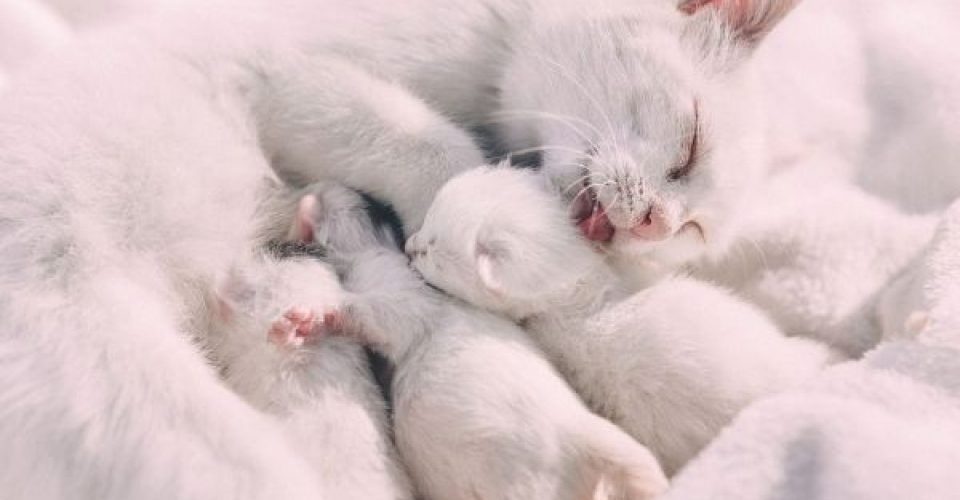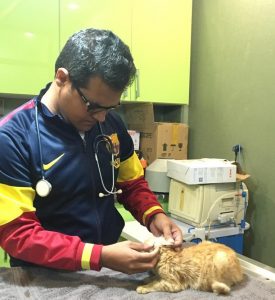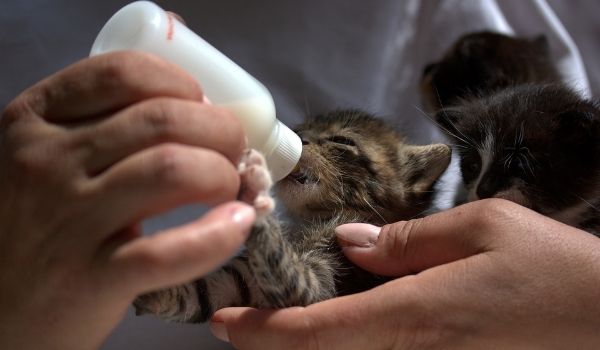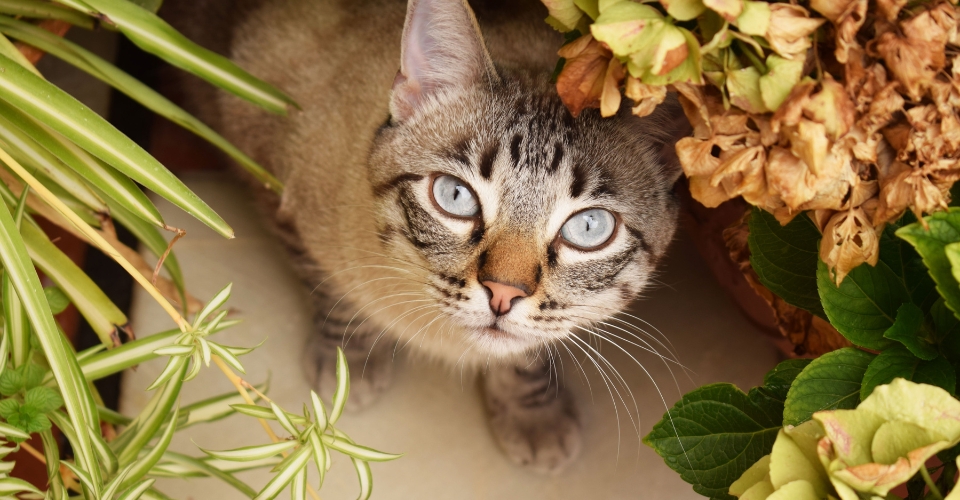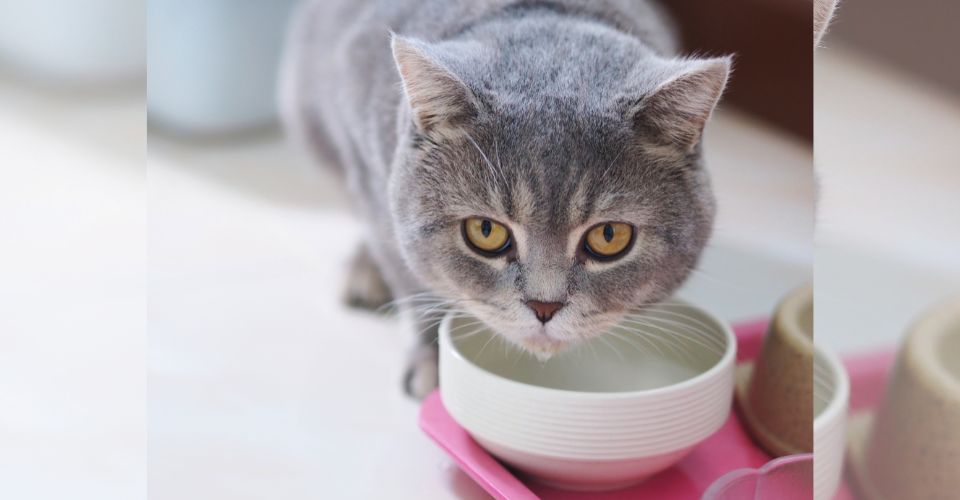When kittens come into this world, they are dependent on their mother for almost everything – from grooming to feeding. But soon, like human beings, kittens have to stop drinking their mother’s milk and switch to other foods. This is what weaning kittens are all about – the journey of young kittens transitioning from their mother’s milk to a solid diet.
During the first two months, kittens go through an overwhelming number of developmental changes (weaning being one of them), which could be baffling for cat owners, especially novice cat owners, to keep track of. In such cases, a kitten growth chart comes in handy for cat owners in monitoring kitten growth timelines. It also helps one check if their kittens are growing properly.
Indeed, weaning is the first step taken by kittens towards their independence. But like weaning a human baby, weaning kittens can be a bit messy. That is why we have developed a comprehensive guide on the complete process of weaning kittens.
Just follow every step, and it will become a piece of cake. But remember, there is no tough love – be patient and keep supportive towards your baby kitties throughout their struggle.
Happy weaning!
Weaning Kittens
As kittens grow quickly during their early age, kittens delegate their dependence process to their mothers. Ideally, the mother cats execute the whole weaning process. However, if you have adopted an orphaned kitten or mama cat is unable to produce milk due to mastitis, you will have to play the role of mama cat. You will have to feed the kitten and help her transition to the weaning stage.
Here, the responsibility of weaning the kitten would be lying on your shoulders as well.
Kitten Weaning Age: What Age Should a Kitten Be Weaned?
The kitten weaning process normally starts between four and six weeks, and most kittens are fully weaned by week seven, but sometimes cats may take up to 10 weeks.
However, you can also ascertain if your kitten is ready to be weaned and be on its own by looking for her ability to move, stand, open eyes, and wag her tail. If these capabilities exist, you can continue the weaning process. In addition to this, kittens growing incisors and canines also indicate that they have reached the weaning age. In the wild, when mothers observe these signs, they start weaning their babies themselves right away.
Abort Kitten Weaning!
If your kitten starts losing weight during the weaning process, you should abort weaning and continue feeding her the KMR formula.
How to Wean Kittens?
Weaning kittens is a two-step process: preparation and execution. Each of these processes is discussed in detail below:
Preparation
As the phase name indicates, it is about getting ready. For this, you need to bring in the right replacements of mother’s milk for your kittens. To serve this purpose, different kinds of kitten milk replacer formulae are available in the market. However, you should go for the one high in quality and close to replicating the mother cat’s milk both in nutrition and taste.
Caution!
Never offer your kitten cow milk. As kittens’ stomachs cannot process it, they will end up having diarrhea. Also, do not feed your kitten dog or human food as besides being deficient in nutrition, it can also be poisonous sometimes.
In addition to milk, you need to purchase solid food as well. While selecting one, make sure it contains meat and is high in proteins, essential for proper growth in kittens.
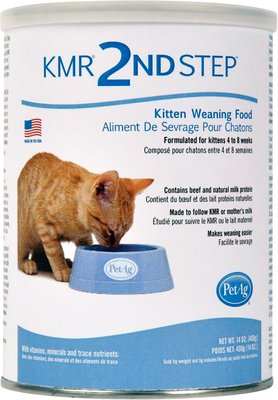
|
|
|
Always make it easy for your kitten to have her food, and shallow food bowls serve this purpose best as her tongue can easily reach the bottom, licking every inch of her savory.
Execution
Now that the necessary supplies are ready, it is showtime!
Step 1: Removing the Kitten
Remove the kitten from her mother for a few hours to feed her the KMR formula. Though the kitten might resist for the first few days, she will give in and eventually become habitual. In general, it is okay to separate a kitten from her mother for a few hours every day. Remember that the kitten should not be removed abruptly, and both the mother and her children should be given adequate food and supplied with a litter box all the time.
Step 2: Feeding Milk Replacement
Afterward, present the milk replacement to your kitten. In the early stages, your kitten would need small but more frequent feeding sessions. A kitten feeding chart would give you an idea about how much and how often you should be feeding your kitten.
You will have to replicate the suckling mechanism present in cats’ nipples for your kitten to ‘feel normal.’ To do so, just get an eye-dropper and fill it with formula milk. Put it into the mouth of your kitten and start dropping. You can also purchase special feeders, or you can also simply put some replacement formula on your finger and get your kitten to lick it. Whatever method you apply, make sure that the kitten is on her stomach and not on her back. Also, consider burping and patting her.
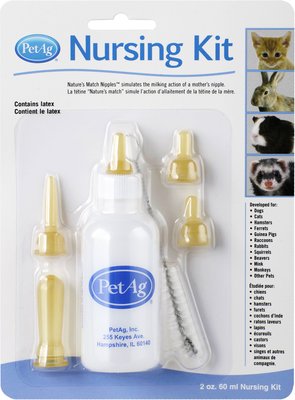
|
|
|
Step 3: Introducing Bowl
In the next step, you have to transition from bottle-feeding kitten to bowl. It can be a tough process because the kittens used to suckle mechanism usually find bowl atypical. To make it easy, kittens need to be shown the way, and they do the rest themselves. Just bring your kitten near the bowl full of milk (make sure the kitten sees it), dip your finger in it, and make the kitten have a smell of it. And your kitten will start exploring the bowl on its own.
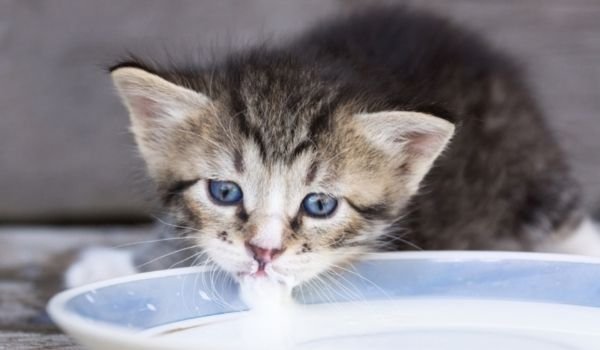
Caution!
Never push your kitten’s face into the bowl. Doing so can make her inhale the formula particles, which can have a bad impact on her lungs.
Step 4: Shifting to Gruel
Once your kitten is accustomed to drinking from a bowl, introduce gruel into her diet. To make a gruel, mix kitten food with the milk replacement. You can also use a blender to mix them thoroughly. Note that the ideal age for kittens to be shifted to gruel is about five to six weeks.
Step 5: Transitioning to Solid Food
Finally, when your kitten reaches the age of eight weeks, stop offering her gruel. Instead, provide her with moistened food. Here are a few recommendations to make this transition smooth:
- Moisten the food gradually to make it acceptable to your kitten in the original composition.
- Always place a separate bowl of water next to the solid food.
- Feed at least two meals to your kitten every day.
- You can practice the ‘free-feeding method’ for your kitten if she does not like to be fed in fixed schedules. However, it may lead to obesity.
Health Considerations
Weaning kittens must be kept in a warm place. To do so, consider putting a layer of towels and diapers in the box where kittens are kept. You may also consider placing a heating pad or hot water bottle beneath these layers. In addition to offering plenty of heat, it is also an easily removable arrangement if it gets too hot.
Weaning Kittens FAQs
What happens if kittens are weaned too early?
Kitten weaned too early will weaken and would start losing weight immediately. Besides immediate weight loss and weakness, kittens weaned too soon are prone to developing health issues at later stages in life.
Kittens weaned to soon also develop behavioral issues and struggle with socialization. Early weaning also robs kittens of the opportunities to learn lifelong lessons from their mothers like grooming. Therefore, you can expect an early-weaned kitten to be a clumsy groomer.
So never rush into weaning kittens. Slow weaning leads to healthier kittens.
How Long Does It Take To Wean a Kitten?
Generally, it takes about four to six weeks for kittens to be weaned completely. Typically, if the process is started at no later than four weeks of age, a kitten is completely weaned by the age of eight to ten weeks. However, if the kitten seems too weak, you can slow down the weaning process.
When Do Kittens Start Using the Litter Box?
Kittens start using litter boxes by the age of three weeks. They learn to do so by looking at their mama cat. Just like weaning, when a kitten reaches an appropriate age, she must be introduced to a litter box.
How to Wean Orphaned Kittens?
Every kitten is blessed with strong instincts to preserve itself. Hence, there is not much to worry about. All you need in weaning orphaned kittens is to make sure that they are confident about eating on their own, without the mother. Just wean your kitten normally, and it will be set to conquer the world.
My Kitten Steps Into the Bowl. What Can I Do?
It is normal for young kittens to step into the bowl while trying to eat from it. Do not be surprised as it is a healthy way for them to explore their environment. If things get messy, be patient and clean your kitten after each eating session.

